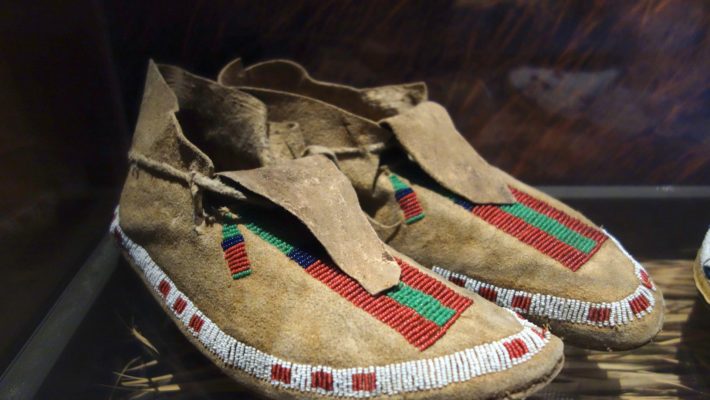The new Queer Eye is afoot, setting hearts aglow with what some (white) critics are calling “the soul-soothing, wholesome content that we’ve come to expect”. And sure, mostly it is. But a glaring editorial oversight in episode seven left Natives and our advocates reeling from racist microaggressions.
In a sequence of quick cuts, the gang goes off about their ‘spirit animals’, one after another in succession. Apparently no one who works on the show got the memo that non-Natives appropriating the concept of ‘spirit animals’ is racist—especially when used in a flippant, diminutive way (e.g. “my spirit animal today is an adolescent corgi… just being a happy pupper.”) Yikes overload!
Luckily, the internet is there to illuminate and inform, with experts like Dr. Adrienne Keene swooping in to gently correct the misstep.
My dearest @QueerEye I love you so so much but the “spirit animal” thing in S3E7 is super disrespectful to the Native nations and traditions that concept comes from.
— Dr. Adrienne Keene (@NativeApprops) March 18, 2019
So what’s the big deal about using the term ‘spirit animal’? Isn’t it respectful to celebrate someone else’s culture? I love animals and Native Americans! Okay, let’s just stop there. Here’s a quick rundown of why it’s harmful.
Non-Native Narratives Normalize Negative Native Stereotypes
First, I apologize for failing to find a synonym for ‘stereotypes’ that begins with the letter ‘N’. But more importantly, stop using ‘spirit animals’! If Natives say it’s racist, please listen to them instead of their argumentative white detractors.
“There’s genuine harm in these actions,” notes Heather Davidson, who’s Dena’ina Athabascan and Unangan (Aleutian), in Teen Vogue. “Non-Natives do not get to define or decide what is or isn’t racist or harmful to Native people or the degree of relevance of certain issues, only Natives can.”
This should be the end of the conversation.
The Origins of the Term ‘Spirit Animal’
The term ‘spirit animal’ isn’t traditional to any tribe or culture, as far as I’ve found. However, the concept closely resembles ‘totem animals’. Totem poles are a Pacific Northwest tradition, found in nations from the Haida to the Coast Salish. They represent heraldry. But the word ‘totem’ is not Salish or Haida. It’s from the Ojibwe word ‘doodem,’ meaning clan.
The Ojibwe, from the Great Lakes region, often named their clans after animals. Many of us did. The application of an Ojibwe word to Pacific Northwest artwork is a classic colonial SNAFU, like calling the Diné people ‘Navajo’. It tethers the public understanding of us to a colonial perspective.
The inaccurate term ‘spirit animal’ has developed into a caricature of other Native spiritual practices as well. Communing with, semideifying, naming people after, dancing like, and transforming into animals all certainly are traditions found in many indigenous cultures. To the onlooker, ‘spirit animal’ conveniently ropes all these practices together for ease of general consumption.
Spirit Animals in the New Age and Hippie Movements
The term has become pervasive in the new age movement with books like this and this unholy garbage (how did that guy on the cover find an eagle head so big?). New agism is appropriative by nature, collecting pieces of cultures and religions in the true colonial fashion of the culturally adrift. Hippie culture, new age’s close relative and another perpetuator of the ‘spirit animal’ farce, is arguably one big appropriation of Native culture for white consumption. At least, it was in its origins, before yoga culture caught on.
Here’s the thing, though. We aren’t here for general consumption. Native cultures aren’t for sale, even when they’re fashioned crudely into cheap mockeries that have little to do with who we are. To us, using ‘spirit animal’ is roughly equivalent to donning clumsy face paint and a loin cloth while war-whooping around a campfire. It’s such a mockery of us that it doesn’t even matter how inaccurate it is. The inaccuracy is part of the harm. Because when colonial stereotypes about us are the only representation we get in the dominant culture, it prevents non-Natives from seeing, hearing and understanding who we really are.
Who Controls Native Cultural Identity?
This begs the question, ‘who controls Native cultural identity?’ The short answer is, white institutions do. Maybe a better question is ‘who has the right to control Native cultural identity?’ That would be a different answer, because no one has that right but Natives.
Throwing around terms rooted in stereotypes, like ‘spirit animal’, reinforces the damaging images of Natives perpetuated by the institutions that have worked for hundreds of years to extinguish our cultures and people. It assists them in defining us as silly savages in need of a white savior, or as a wise but, alas, extinct people. It does not honor us. It’s also not a concept Native people have volunteered for recreational non-Native identity claims. Hands off! Please and thank you.
By the way, there’s a conversation to have here about lateral violence from one oppressed group (gays) to another (Natives), and how layers of privilege empower one oppressed group with a platform (cis, mostly white gay men) to inflict microaggressions upon another group that doesn’t have a platform (Natives again). But that’s for another time.
Meanwhile, here’s hoping for a more soul-soothing and wholesome wrap up to season three.
AppropriationLateral ViolenceMicroaggressionsNative AmericanNative IdentityQueer EyeRepresentationSpirit Animals




